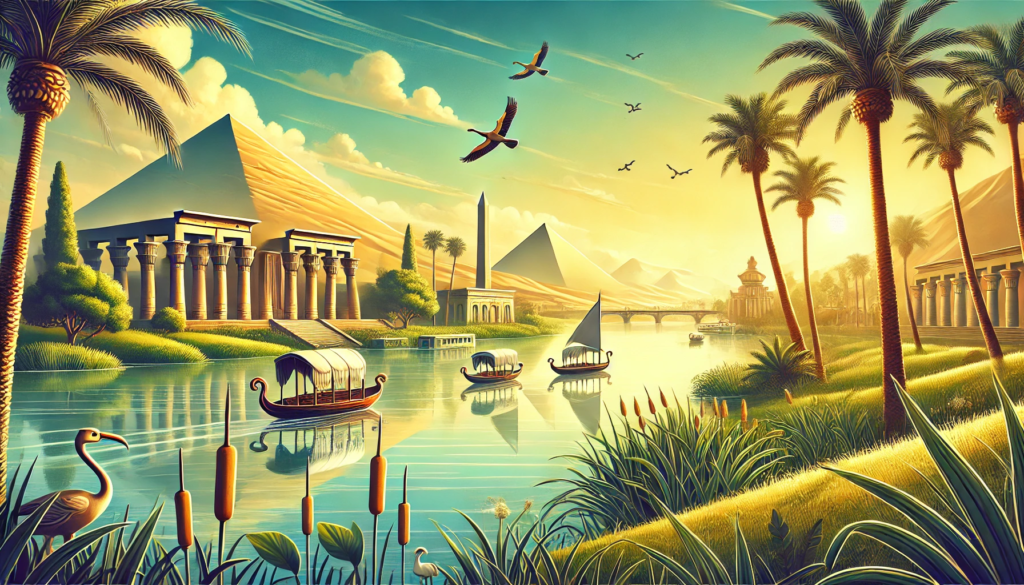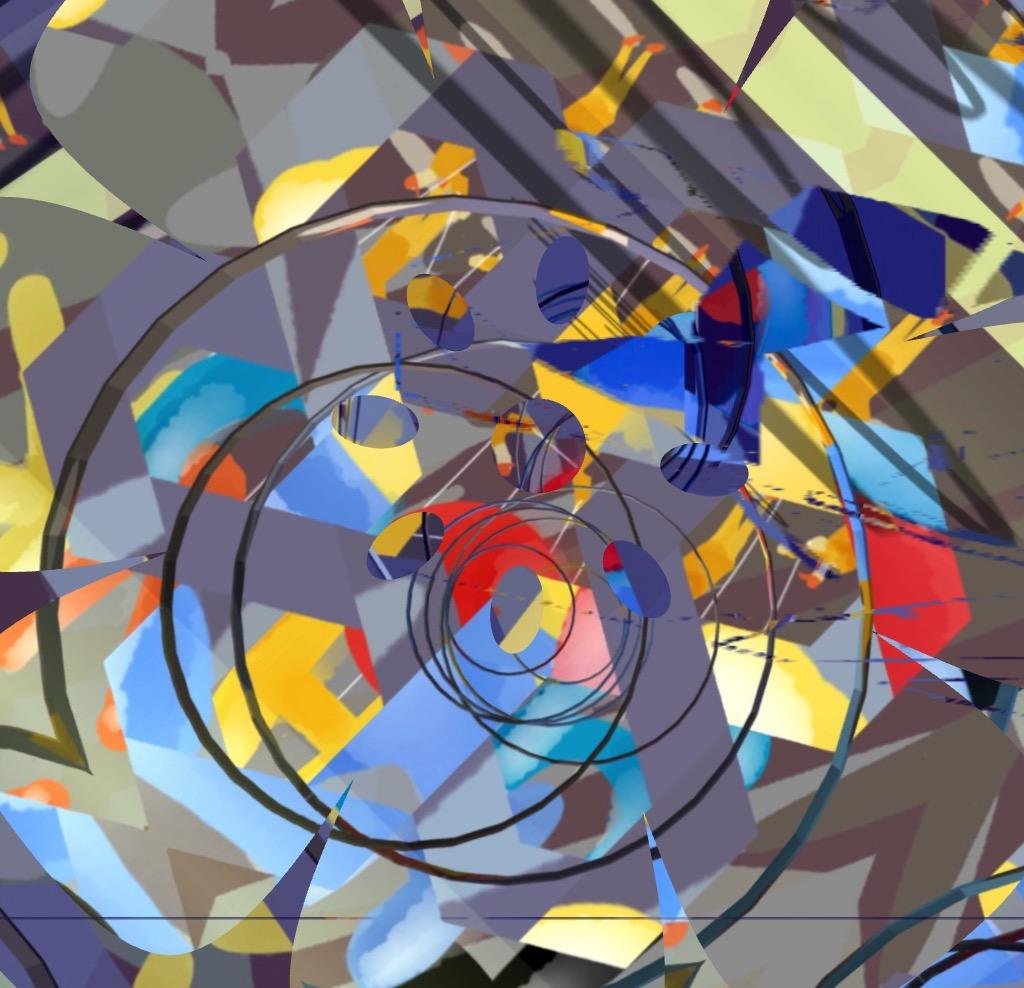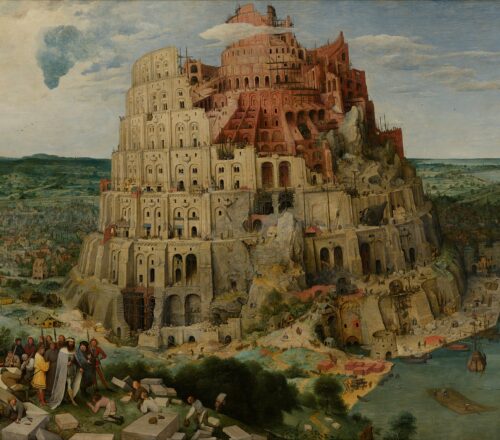
Table of Contents
The Ennead of Heliopolis
The Ennead is one of the most important and ancient groups of deities in Egyptian mythology. It originates from Heliopolis, the religious center dedicated to the sun god Ra. The term “Ennead” comes from the Greek word for “nine,” and it refers to a group of nine deities who were considered primary gods in the Heliopolitan cosmology. This group plays a significant role in Egyptian creation myths and religious practices.
The Nine Deities of the Ennead
- Atum (or Ra-Atum)
- Role: The creator god and the original deity of Heliopolis.
- Attributes: Atum is often depicted as a man wearing the double crown of Egypt, symbolizing his rule over both Upper and Lower Egypt. In some myths, he is merged with Ra and referred to as Ra-Atum.
- Significance: According to the Heliopolitan creation myth, Atum emerged from the primordial waters of chaos (Nun) and created himself. He then created the first gods by spitting or masturbating, symbolizing the act of creation.
- Shu
- Tefnut
- Role: Goddess of moisture and rain.
- Attributes: Tefnut is often depicted as a lioness or a woman with a lioness’s head.
- Significance: Tefnut represents moisture, essential for life. She and Shu are twin deities and the first pair of gods created by Atum.
- Geb
- Role: God of the earth.
- Attributes: Geb is usually shown as a man lying beneath Nut, with his body covered in plants.
- Significance: Geb personifies the earth and is the father of Osiris, Isis, Seth, and Nephthys. Earthquakes were believed to be his laughter.
- Nut
- Role: Goddess of the sky.
- Attributes: Nut is depicted as a woman arching over the earth, her body adorned with stars.
- Significance: Nut represents the sky and is the mother of the four major gods: Osiris, Isis, Seth, and Nephthys. She swallows the sun each evening and gives birth to it each morning.
- Osiris
- Role: God of the underworld and judge of the dead.
- Attributes: Osiris is often shown as a mummified man wearing a white crown with ostrich feathers.
- Significance: Osiris is a central figure in Egyptian mythology. He was killed by his brother Seth and resurrected by his wife, Isis. Osiris became the ruler of the underworld and symbolized resurrection and eternal life.
- Isis
- Role: Goddess of magic, motherhood, and fertility.
- Attributes: Isis is depicted as a woman with a throne-shaped crown or with a solar disk between cow horns.
- Significance: Isis is one of the most important and popular deities in Egyptian mythology. She is known for her magical prowess and her role in resurrecting Osiris. She is also the mother of Horus, the falcon-headed god.
- Seth (or Set)
- Role: God of chaos, desert, storms, and foreigners.
- Attributes: Seth is depicted as a man with the head of a mysterious, unidentifiable animal, often called the “Seth animal.”
- Significance: Seth represents chaos and destruction. He murdered his brother Osiris and was often in conflict with Horus. However, Seth also played a protective role for Ra during his nightly journey through the underworld.
- Nephthys
- Role: Goddess of mourning, funerary rites, and the night.
- Attributes: Nephthys is depicted as a woman with a house and a basket on her head, representing her name in hieroglyphs.
- Significance: Nephthys is the sister of Isis and Osiris and the wife of Seth. She is often associated with death and the protection of the dead. She played a crucial role in the resurrection of Osiris and in caring for the deceased.
Theological Significance
The Ennead represents the core of the Heliopolitan theology and cosmology. The mythological narratives involving these deities explain the creation of the world, the nature of life and death, and the ongoing struggle between order (Ma’at) and chaos (Isfet). The interactions and relationships among these gods were used to explain natural phenomena, social order, and religious practices.
Influence on Egyptian Religion
The concept of the Ennead had a profound influence on the religious and cultural life of ancient Egypt. Temples dedicated to these gods were centers of worship, learning, and political power. Priests of Heliopolis, like Potiphera, played crucial roles in maintaining the religious traditions and practices associated with the Ennead. The mythology surrounding these deities was integral to the Egyptian worldview and their understanding of the universe.
Conclusion
The Ennead of Heliopolis encapsulates the essence of ancient Egyptian religion, combining mythology, theology, and cosmology into a coherent system that explained the creation and functioning of the world. The stories and attributes of these nine deities reflect the complexity and richness of Egyptian spiritual life and continue to fascinate scholars and enthusiasts of ancient history.
Meaning of Ennead explained
The term “Ennead” itself is of Greek origin, derived from the word “ennea” which means “nine.” However, its concept and significance in the context of ancient Egyptian religion relate to the Egyptian grouping of nine deities.
In ancient Egyptian, the concept of the Ennead is referred to as “Pesedjet” (also spelled “Pesedjet” or “Pesdjet“). The word “Pesedjet” directly translates to “a group of nine.” The Ennead of Heliopolis specifically refers to this group of nine deities who were worshipped in Heliopolis, symbolizing a theological system that explained the creation of the world and the divine order.
Therefore, while “Ennead” is a Greek term used to describe this group of nine gods, the ancient Egyptians themselves would have referred to it as the “Pesedjet.”
References in various Greek literary sources
The Egyptian concept of the Pesedjet, or the Ennead, is referenced in various Greek literary sources as the Greeks encountered and interpreted Egyptian religion. Here are some notable references:
Herodotus
- “The Histories”: Herodotus, often called the “Father of History,” wrote extensively about Egyptian customs, geography, and religion in his work “The Histories” (5th century BCE). He described various Egyptian gods and their roles, providing a Greek perspective on Egyptian theology. While he does not explicitly use the term “Pesedjet,” his descriptions of the gods align with the understanding of the Ennead.
Plutarch
- “De Iside et Osiride” (On Isis and Osiris): Plutarch, a Greek biographer and essayist, wrote this work around the 1st century CE. It is a detailed account of the myth of Osiris and Isis, which are key deities in the Ennead. Plutarch’s work reflects how Greek and Roman interpretations of Egyptian religion were influenced by their understanding of Egyptian deities and myths.
Diodorus Siculus
- “Bibliotheca historica” (Historical Library): In the 1st century BCE, Diodorus Siculus wrote this comprehensive history, which includes descriptions of Egyptian gods and religious practices. He discusses the gods and their genealogies, echoing the structure of the Ennead as understood by the Egyptians.
Strabo
- “Geographica”: Strabo, a Greek geographer and historian, wrote about various regions, including Egypt, in his work “Geographica” in the 1st century BCE to 1st century CE. His descriptions of Egyptian cities, including Heliopolis, touch upon the worship practices and the importance of certain deities that make up the Ennead.
Clement of Alexandria
- “Stromata“: Clement of Alexandria, an early Christian theologian (late 2nd to early 3rd century CE), mentioned Egyptian religious practices and deities in his work “Stromata” (Miscellanies). While his primary focus was on contrasting pagan religions with Christianity, he provided insights into the Egyptian pantheon from a Greek perspective.
Greek Interpretations and Syncretism
- Syncretism: The Greeks often identified Egyptian gods with their own deities, a practice known as syncretism. For example, they identified Osiris with Dionysus, Isis with Demeter, and Horus with Apollo. This syncretism reflects the integration and reinterpretation of the Pesedjet within the Greek religious framework.
Influence on Later Greek Thought
- Hermetic Texts: The Hermetic texts, attributed to Hermes Trismegistus (a syncretic figure combining the Greek god Hermes and the Egyptian god Thoth), also reflect the blending of Greek and Egyptian religious ideas. These texts, though later and not strictly Greek literature, are part of the broader Hellenistic influence on the interpretation of Egyptian theology.
These references illustrate how Greek writers and scholars engaged with and interpreted Egyptian religious concepts, including the Pesedjet, integrating them into their own cultural and religious contexts. The Ennead, as a group of nine major deities, became a familiar concept through these interactions, shaping the way Egyptian religion was understood and recorded in Greek literature.
Blessings to you! ??❤️ Have a wonderful day! ?
Embark on a journey into the realm of affiliate marketing and craft your own website within a vibrant, supportive community. Join me in this adventure, where you can begin as a free starter and stay as long as you desire. Enjoy complimentary hosting and foundational teachings to set you on your path. For those with advanced skills, opportunities to elevate your expertise await. Take a moment to explore and witness the magic for yourself!




